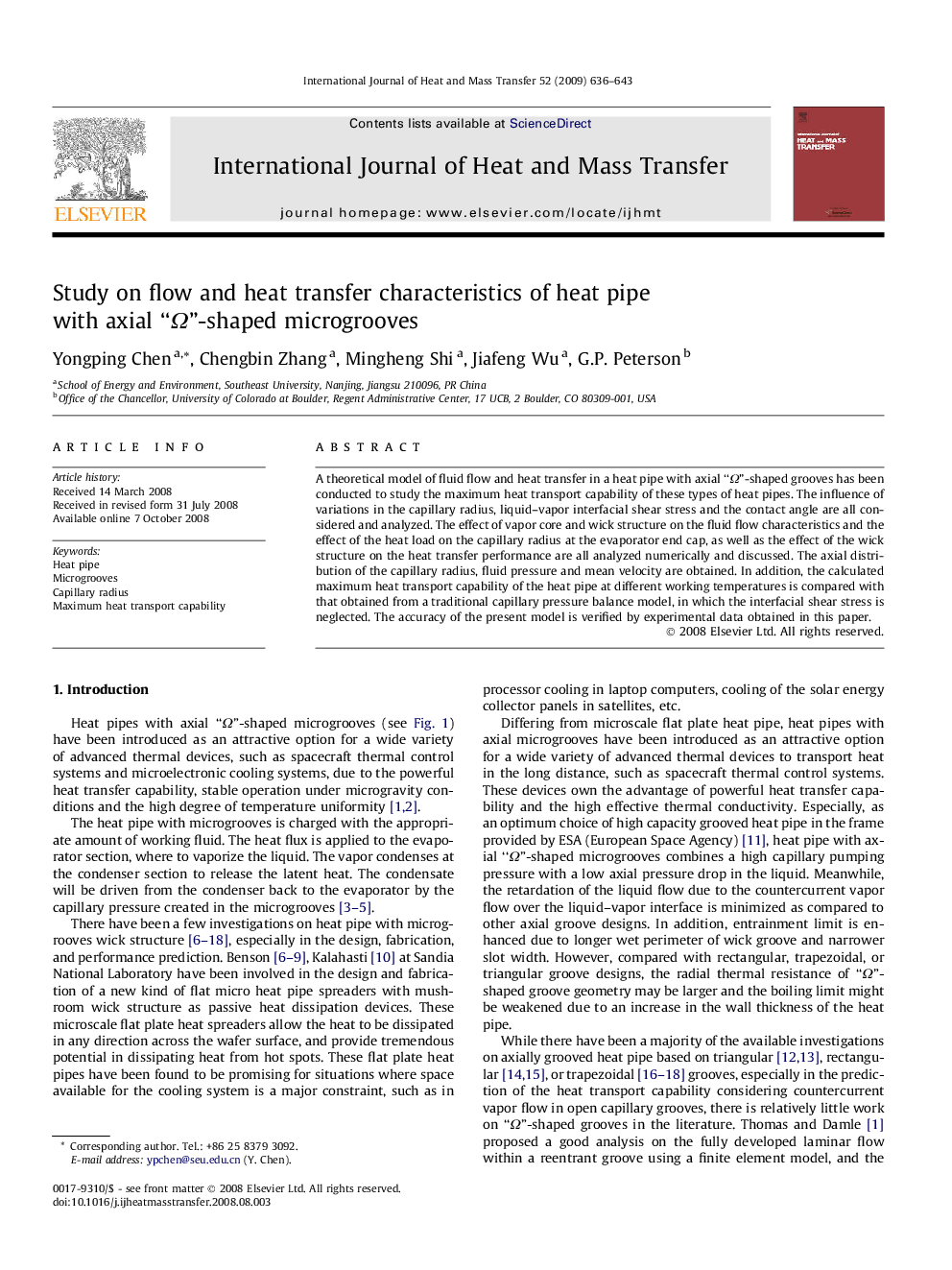| Article ID | Journal | Published Year | Pages | File Type |
|---|---|---|---|---|
| 660600 | International Journal of Heat and Mass Transfer | 2009 | 8 Pages |
A theoretical model of fluid flow and heat transfer in a heat pipe with axial “Ω”-shaped grooves has been conducted to study the maximum heat transport capability of these types of heat pipes. The influence of variations in the capillary radius, liquid–vapor interfacial shear stress and the contact angle are all considered and analyzed. The effect of vapor core and wick structure on the fluid flow characteristics and the effect of the heat load on the capillary radius at the evaporator end cap, as well as the effect of the wick structure on the heat transfer performance are all analyzed numerically and discussed. The axial distribution of the capillary radius, fluid pressure and mean velocity are obtained. In addition, the calculated maximum heat transport capability of the heat pipe at different working temperatures is compared with that obtained from a traditional capillary pressure balance model, in which the interfacial shear stress is neglected. The accuracy of the present model is verified by experimental data obtained in this paper.
